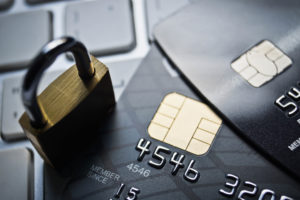 EMV chip-based credit cards are taking the payments world by storm. It’s clear now that the further spread of EMV is inevitable, so merchants are left wondering how it will end up affecting their business in the long run. This article will give you a full rundown on what EMV is. From there, we’ll tell you what you need to know about how it will impact your business on a day to day basis.
EMV chip-based credit cards are taking the payments world by storm. It’s clear now that the further spread of EMV is inevitable, so merchants are left wondering how it will end up affecting their business in the long run. This article will give you a full rundown on what EMV is. From there, we’ll tell you what you need to know about how it will impact your business on a day to day basis.
What is EMV?
EMV stands for the credit card companies Eurocard, Mastercard, and Visa, and it represents the three major credit card carriers that now use microchip technology instead of magnetic strips. This technology is now known as an “EMV chip.” Because the microchips offer better security than magnetic strips, other carriers like American Express and Discover are using EMV credit cards as well.
For EMV, the card is inserted into a contactless system rather than swiped. This is important—because the chip never has to make actual contact with anything, cards don’t wear out as fast. For further card authentication providing an added layer of security, the customer can then be prompted to enter their pin.
Contactless EMV microchips have become the global standard for credit card security. This is an improvement from the less secure magnetic strip,  which has appeared on debit cards and credit cards since they were invented. The magnetic strip contains card payment data and while EMV cards still have the strip, sensitive cardholder data is now protected in the microchip instead of the much more vulnerable magnetic strip system.
which has appeared on debit cards and credit cards since they were invented. The magnetic strip contains card payment data and while EMV cards still have the strip, sensitive cardholder data is now protected in the microchip instead of the much more vulnerable magnetic strip system.
The reason cards still contain the magnetic strips is so that merchants who can’t afford to upgrade to EMV card readers yet will have time to catch up. Eventually, magnetic strips will most likely be phased out completely in favor of EMV readers and verification methods.
Why is EMV the New Standard for Credit Cards?
EMV cards are an enormous step forward in terms of verification and fraud reduction. First off, the old magnetic strips are easy to replicate if a credit card is stolen. Microchips, on the other hand, are extremely expensive and time-consuming to replicate. For a lost or stolen card’s EMV microchip to be duplicated, it would take tremendous technical skill and special equipment.
 In addition, EMV cards can’t be hacked using card-skimming machines. ATM skimmers are essentially fake ATM card swipe readers that can be installed over an ATM machine by a thief. Since they seamlessly integrate with ATM machines, skimmers look and feel just like real ATMs. But when you swipe your card, your personal data is stolen and stored in the skimmer. Later, when the fraudster retrieves the skimmer, they have the debit and credit card info of everyone who used it.
In addition, EMV cards can’t be hacked using card-skimming machines. ATM skimmers are essentially fake ATM card swipe readers that can be installed over an ATM machine by a thief. Since they seamlessly integrate with ATM machines, skimmers look and feel just like real ATMs. But when you swipe your card, your personal data is stolen and stored in the skimmer. Later, when the fraudster retrieves the skimmer, they have the debit and credit card info of everyone who used it.
With EMV cards rendering skimming attempts useless, the credit card industry has defeated one of the most powerful weapons used by credit card thieves. As a result data breaches will become less likely for the life of your business.
How Will It Impact You?
EMV magnetic chip cards primarily impact merchants taking payments in person, where a customer uses their physical credit or debit card. For service-based merchants, the impact will be minimal. There will also be very little impact for certain types of transactions. If your business operates primarily with one of the following forms of payment, EMV cards will have very little if any impact:
- Mail or Telephone Orders: If your business primarily processes transactions through the mail or over the phone, the EMV system won’t
 matter much for you. While modern retailers are doing fewer and fewer of their transactions this way, it is sometimes necessary to use a mail or telephone ordering system. Since these systems collect credit card data by hand, the existence of a microchip makes no difference.
matter much for you. While modern retailers are doing fewer and fewer of their transactions this way, it is sometimes necessary to use a mail or telephone ordering system. Since these systems collect credit card data by hand, the existence of a microchip makes no difference. - Orders Where Payment Info is Entered Manually: For Ecommerce merchants who only collect orders via an online ordering system, either through a mobile application or a virtual terminal, EMV has no impact. For these card-not-present transactions, payment info is entered manually. Since the card is never physically swiped or inserted, the EMV chip is replaced by other security methods.
Technology Upgrades
For other merchants, however—those that process cards in person, using card readers—the EMV system requires that they upgrade their point of sale terminals. Merchants who only have a swipe reader capable of reading magnetic strips will have to buy a new card reader that allows cards to be inserted for the microchip to be read.
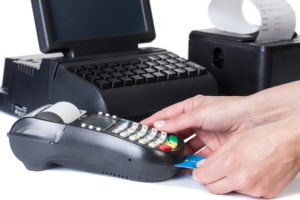 If you don’t upgrade your POS equipment, your business could be held liable in cases of credit card fraud. The reduction of fraud liability can make all the difference when just one data breach can bring on a lawsuit where plaintiffs are demanding tens of thousands of dollars. While some businesses might be hesitant to upgrade due to cost, EMV payment technology is becoming more and more affordable. You can also use it as an opportunity to modernize your front-end operations by accepting mobile payments through apps like Apple Pay.
If you don’t upgrade your POS equipment, your business could be held liable in cases of credit card fraud. The reduction of fraud liability can make all the difference when just one data breach can bring on a lawsuit where plaintiffs are demanding tens of thousands of dollars. While some businesses might be hesitant to upgrade due to cost, EMV payment technology is becoming more and more affordable. You can also use it as an opportunity to modernize your front-end operations by accepting mobile payments through apps like Apple Pay.
For these apps to work, your registers and POS terminal needs to have NFC-compatible payment technology. This means “near-field communication,” and it essentially allows a machine to register data from a card even though no physical contact is made between the card and the machine. Since EMV and NFC are companion technologies, investing in smart EMV readers that can read both microchip credit cards and mobile devices alike.
Lastly, if you have even one instance of fraudulent activity due to not having EMV-compatible equipment, the cost of the upgrade could end up paying for itself.
More Benefits to EMV
The benefits to EMV don’t stop at security. EMV also allows transactions to happen faster, meaning reduced wait time and shorter lines. That means 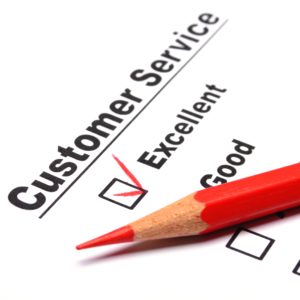 happier customers.
happier customers.
As an added bonus, this also means that EMV allows you to process more transactions in a day. That means more sales revenue, but it could also snag you lower credit and debit card processing fees and a better interchange rate from payment processors. Added cardholder security can improve your negotiating power for a lower interchange rate as well.
Final Thoughts
There is no escaping the rise of EMV technology for credit cards. But don’t fret! Consider it an opportunity to reach more customers, reduce liability and instances of fraud at your store, and process more transactions than ever. Change can be scary, but if you play your cards right, it can also come with enormous opportunities along the way!



 accumulate “frequent flyer miles” that they can cash in for flights anywhere in the world. As a result, customer loyalty is rewarded, which in turn keeps those customers coming back to the same airline. In short, it creates loyal customers for life.
accumulate “frequent flyer miles” that they can cash in for flights anywhere in the world. As a result, customer loyalty is rewarded, which in turn keeps those customers coming back to the same airline. In short, it creates loyal customers for life. Card companies shifted to interchange fees for more profit, and those fees are passed onto merchants. Merchants have had to charge more, but customers paying with rewards cards will earn reward points that are funded by these same fees.
Card companies shifted to interchange fees for more profit, and those fees are passed onto merchants. Merchants have had to charge more, but customers paying with rewards cards will earn reward points that are funded by these same fees.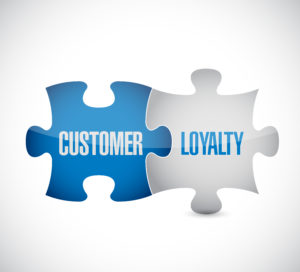 airlines and credit card brands, loyalty to both is rewarded, while merchants bear the cost.
airlines and credit card brands, loyalty to both is rewarded, while merchants bear the cost. Another potential way to offset the costs is to make your company more financially efficient. By lowering your bills and finding better ways to budget, you can make your business lean, saving precious pennies on things like payroll, inventory, even electricity. This frees up money for paying the hidden costs of loyalty programs, but will also make your business work better in the long run.
Another potential way to offset the costs is to make your company more financially efficient. By lowering your bills and finding better ways to budget, you can make your business lean, saving precious pennies on things like payroll, inventory, even electricity. This frees up money for paying the hidden costs of loyalty programs, but will also make your business work better in the long run. Credit card processing is involved in every digital transaction using a credit card or debit card. This process transfers credit card information to and from the issuing and acquiring banks involved in the purchase. These transactions must be secure and PCI compliant to prevent data breach and confidential information from being stolen. For security and
Credit card processing is involved in every digital transaction using a credit card or debit card. This process transfers credit card information to and from the issuing and acquiring banks involved in the purchase. These transactions must be secure and PCI compliant to prevent data breach and confidential information from being stolen. For security and  details for verification. This transaction is initiated by the consumer’s personal credit card. The only data required for this purchase is the credit card number, expiration date, and amount of the transaction.
details for verification. This transaction is initiated by the consumer’s personal credit card. The only data required for this purchase is the credit card number, expiration date, and amount of the transaction. from levels 1 and 2. In addition, the following information must be provided: line items and categories of shipment, destination of shipment, invoice number, freight amount, and duty amount. These transactions are only performed via eCommerce and primarily for government agencies. However, business-to-business transactions may occur at level 3 as well. Based on the severity of clearance required for level 3 processing, these transactions often cost the least of the three levels. As previously stated, an increase in information verified, lower the transaction risk, and therefore, reduces the transaction cost.
from levels 1 and 2. In addition, the following information must be provided: line items and categories of shipment, destination of shipment, invoice number, freight amount, and duty amount. These transactions are only performed via eCommerce and primarily for government agencies. However, business-to-business transactions may occur at level 3 as well. Based on the severity of clearance required for level 3 processing, these transactions often cost the least of the three levels. As previously stated, an increase in information verified, lower the transaction risk, and therefore, reduces the transaction cost. can save an average of 1% on interchange rates and processing fees. This can add up to a hefty savings for any business. When processing transactions at a Level 3 clearance, an itemized invoice is provided, allowing for simplified billing and accounting. Additionally, businesses and government entities can place restrictions on when or how the
can save an average of 1% on interchange rates and processing fees. This can add up to a hefty savings for any business. When processing transactions at a Level 3 clearance, an itemized invoice is provided, allowing for simplified billing and accounting. Additionally, businesses and government entities can place restrictions on when or how the 
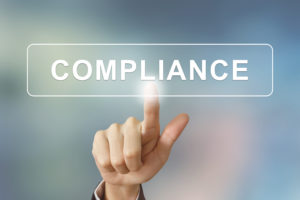 If you’re an ecommerce merchant processing card-not-present transactions, you need to be PCI compliant. PCI stands for “Payment Card Industry,” and being compliant means
If you’re an ecommerce merchant processing card-not-present transactions, you need to be PCI compliant. PCI stands for “Payment Card Industry,” and being compliant means 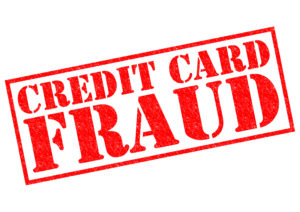 By being ready for the PCI security questionnaire, you’ll be in the best possible position to stay compliant. That means avoiding costly penalties for non-compliance, staying one step ahead of hackers, and protecting your company from customer lawsuits resulting from credit card fraud.
By being ready for the PCI security questionnaire, you’ll be in the best possible position to stay compliant. That means avoiding costly penalties for non-compliance, staying one step ahead of hackers, and protecting your company from customer lawsuits resulting from credit card fraud.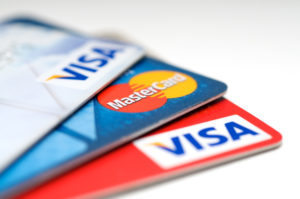 brand—one company will have different criteria for meeting each level than another.
brand—one company will have different criteria for meeting each level than another. Level 2 merchants are those processing fewer transactions than those in the Level 1 category. To be a level 2 merchant, you have to process at least one million transactions per year. But process more than six million per year, and you’ll be bumped to level 2.
Level 2 merchants are those processing fewer transactions than those in the Level 1 category. To be a level 2 merchant, you have to process at least one million transactions per year. But process more than six million per year, and you’ll be bumped to level 2. assessment questionnaires and PCI representatives called Qualified Security Assessors, or QSAs. However, the details and frequency of validation varies according to which level your business qualifies for.
assessment questionnaires and PCI representatives called Qualified Security Assessors, or QSAs. However, the details and frequency of validation varies according to which level your business qualifies for. If you’ve ever asked yourself, “How do I become PCI compliant,” the first step is in adopting the proper security management procedures. Proper security ensures that customer credit card information like account numbers and expiration dates are protected at every phase of checkout, both on your end and on the part of your acquiring bank.
If you’ve ever asked yourself, “How do I become PCI compliant,” the first step is in adopting the proper security management procedures. Proper security ensures that customer credit card information like account numbers and expiration dates are protected at every phase of checkout, both on your end and on the part of your acquiring bank. ecommerce websites should be Hypertext Transfer Protocol Secure, and use https. HTTPS-active sites display “https://” at the beginning of a website address, before the “www.” On https sites, information moving across the servers is more secure than on non-http sites.
ecommerce websites should be Hypertext Transfer Protocol Secure, and use https. HTTPS-active sites display “https://” at the beginning of a website address, before the “www.” On https sites, information moving across the servers is more secure than on non-http sites. system. For example, updating your computers or switching to a new provider would both be situations where you should be re-scanned to stay compliant.
system. For example, updating your computers or switching to a new provider would both be situations where you should be re-scanned to stay compliant. By putting in the effort to become DCI compliant with the standard PCI protocols, you’re saving yourself the hassle of dealing with a data breach. These breaches can cause a loss of customer trust that can take years to earn back. The investment in avoiding serious data leaks with a regular PCI DSS assessment could be one that saves your business.
By putting in the effort to become DCI compliant with the standard PCI protocols, you’re saving yourself the hassle of dealing with a data breach. These breaches can cause a loss of customer trust that can take years to earn back. The investment in avoiding serious data leaks with a regular PCI DSS assessment could be one that saves your business.
 The process of opening and on-boarding merchant accounts in Puerto Rico is quite different than in the US. From different providers and standards to tax considerations, there are lots of differences between the business environments of Puerto Rico and the mainland United States that affect the process.
The process of opening and on-boarding merchant accounts in Puerto Rico is quite different than in the US. From different providers and standards to tax considerations, there are lots of differences between the business environments of Puerto Rico and the mainland United States that affect the process. payment industry. These consultants have a combined industry experience totaling hundreds of years, and are the best and brightest in the business. Finally, after long conversations with some of the most knowledgeable and experienced people throughout the space, we were able to figure out how the Puerto Rican system works.
payment industry. These consultants have a combined industry experience totaling hundreds of years, and are the best and brightest in the business. Finally, after long conversations with some of the most knowledgeable and experienced people throughout the space, we were able to figure out how the Puerto Rican system works. and time-consuming daily reporting process. The island’s Treasury Department also retains a high level of control over smaller aspects of business, so to navigate that influence, we had to look at higher-risk banks to partner with. Even though the charge higher rates, they would be the most adept at wading through all of these factors: the debit network, the tax issues, and the influence of third parties.
and time-consuming daily reporting process. The island’s Treasury Department also retains a high level of control over smaller aspects of business, so to navigate that influence, we had to look at higher-risk banks to partner with. Even though the charge higher rates, they would be the most adept at wading through all of these factors: the debit network, the tax issues, and the influence of third parties. Thanks to this relationship, we are now able to offer our clients underwriting and merchant accounts in Puerto Rico, opening up whole new avenues for business owners looking to open up or move to the island. As a result of going through the process from beginning to end, GAM is also now one of the most knowledgeable firms when it comes to merchant accounts in Puerto Rico. That allows us to bring incredible value to a whole new group of clients.
Thanks to this relationship, we are now able to offer our clients underwriting and merchant accounts in Puerto Rico, opening up whole new avenues for business owners looking to open up or move to the island. As a result of going through the process from beginning to end, GAM is also now one of the most knowledgeable firms when it comes to merchant accounts in Puerto Rico. That allows us to bring incredible value to a whole new group of clients.